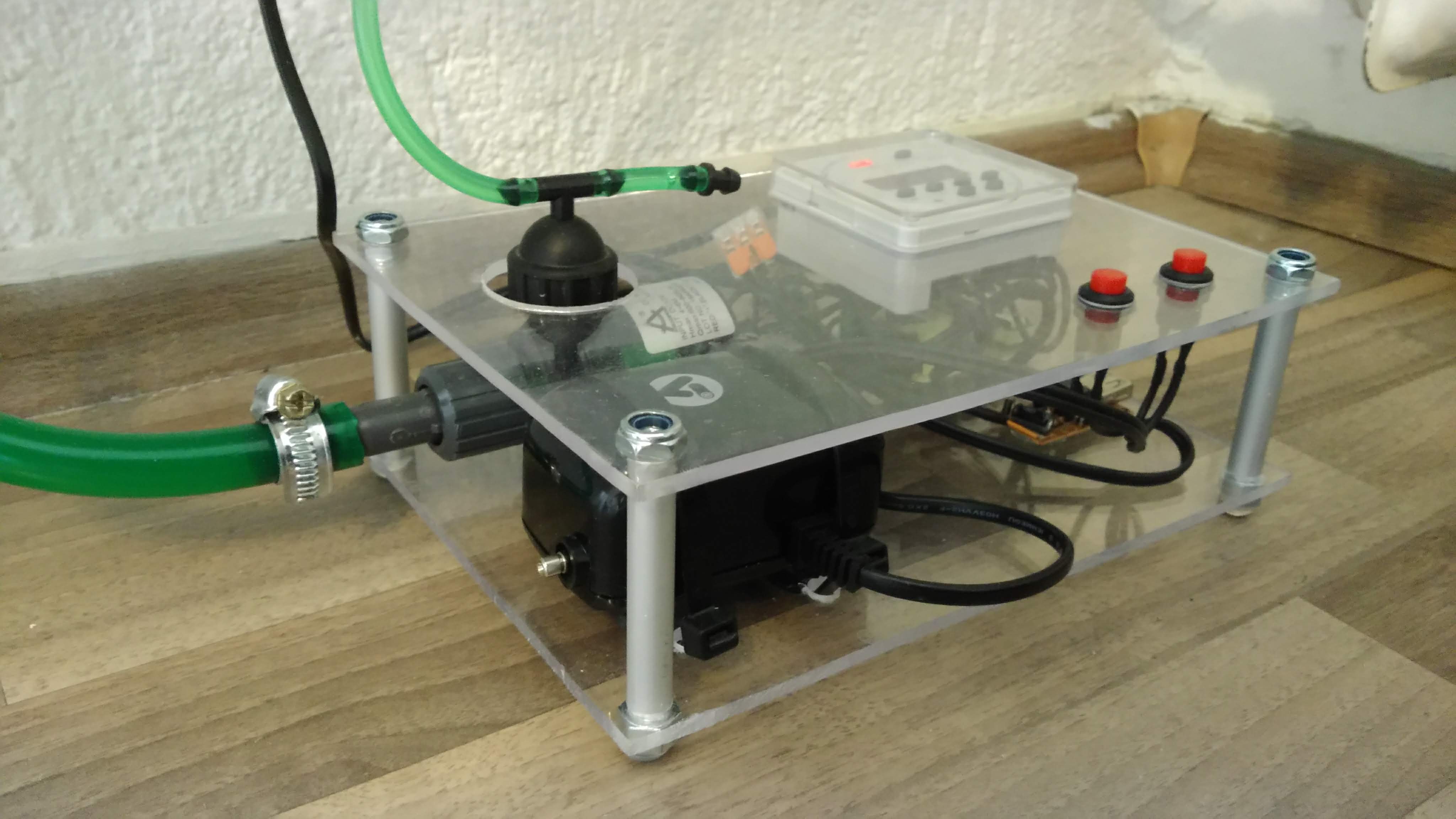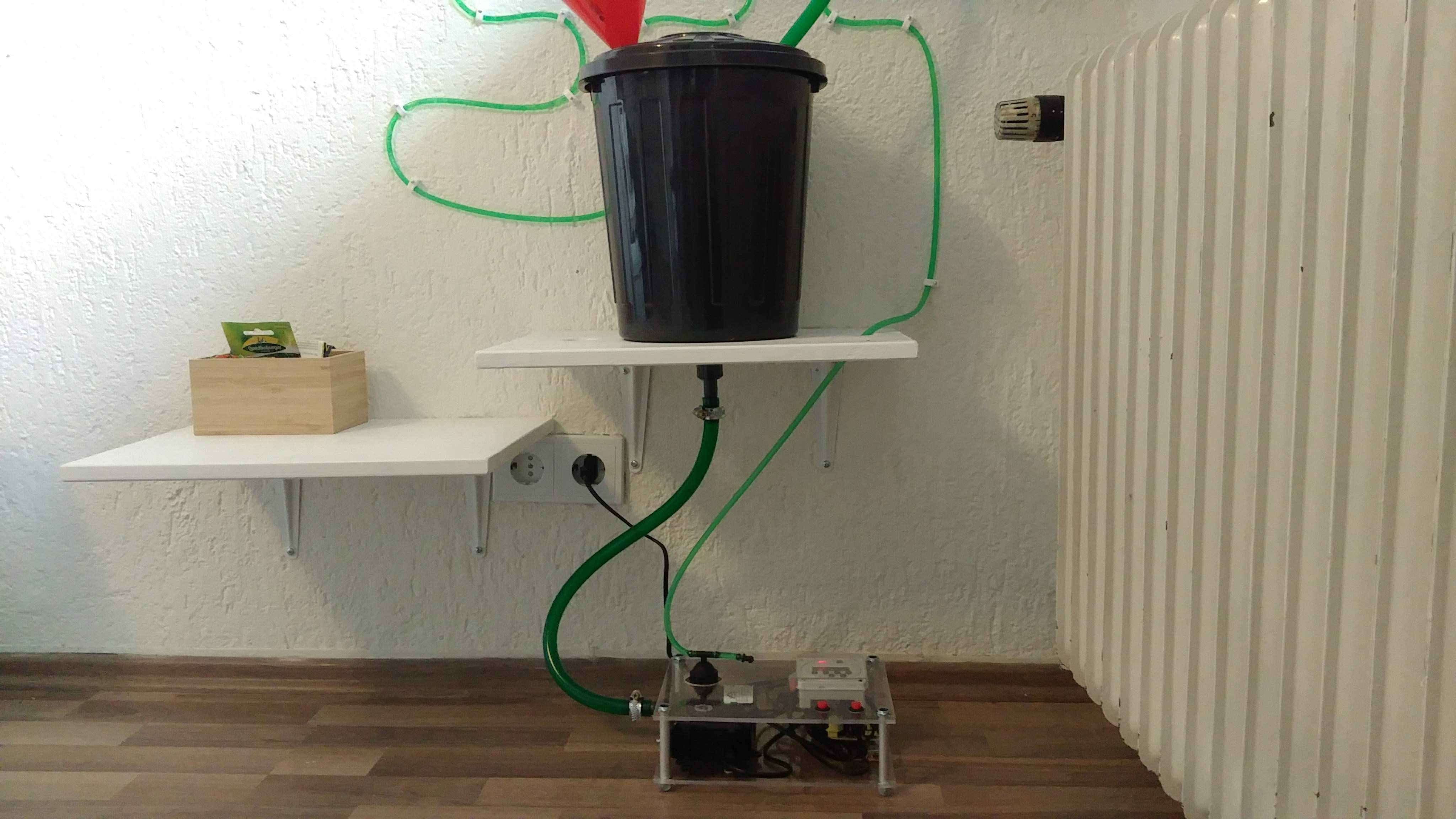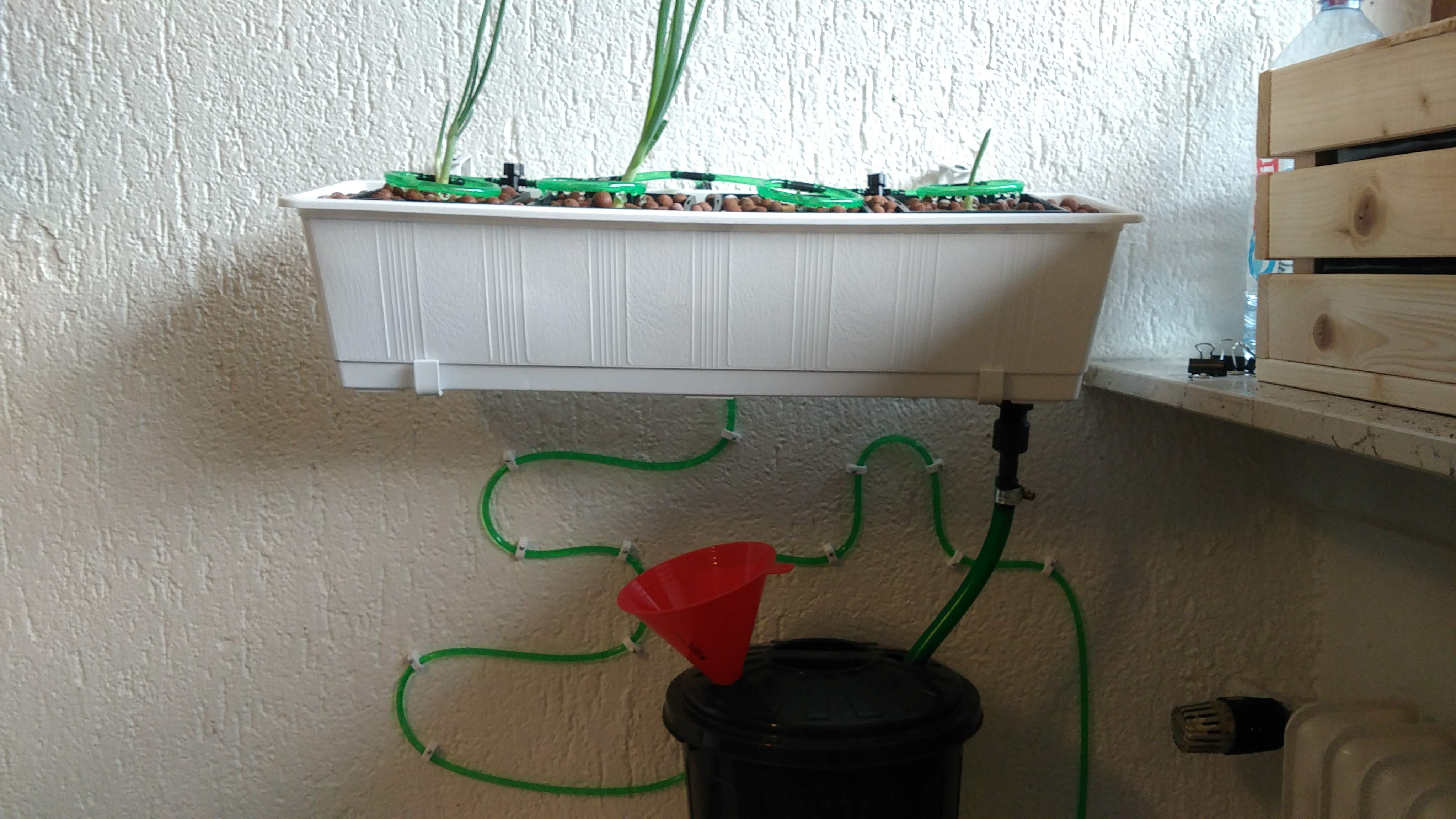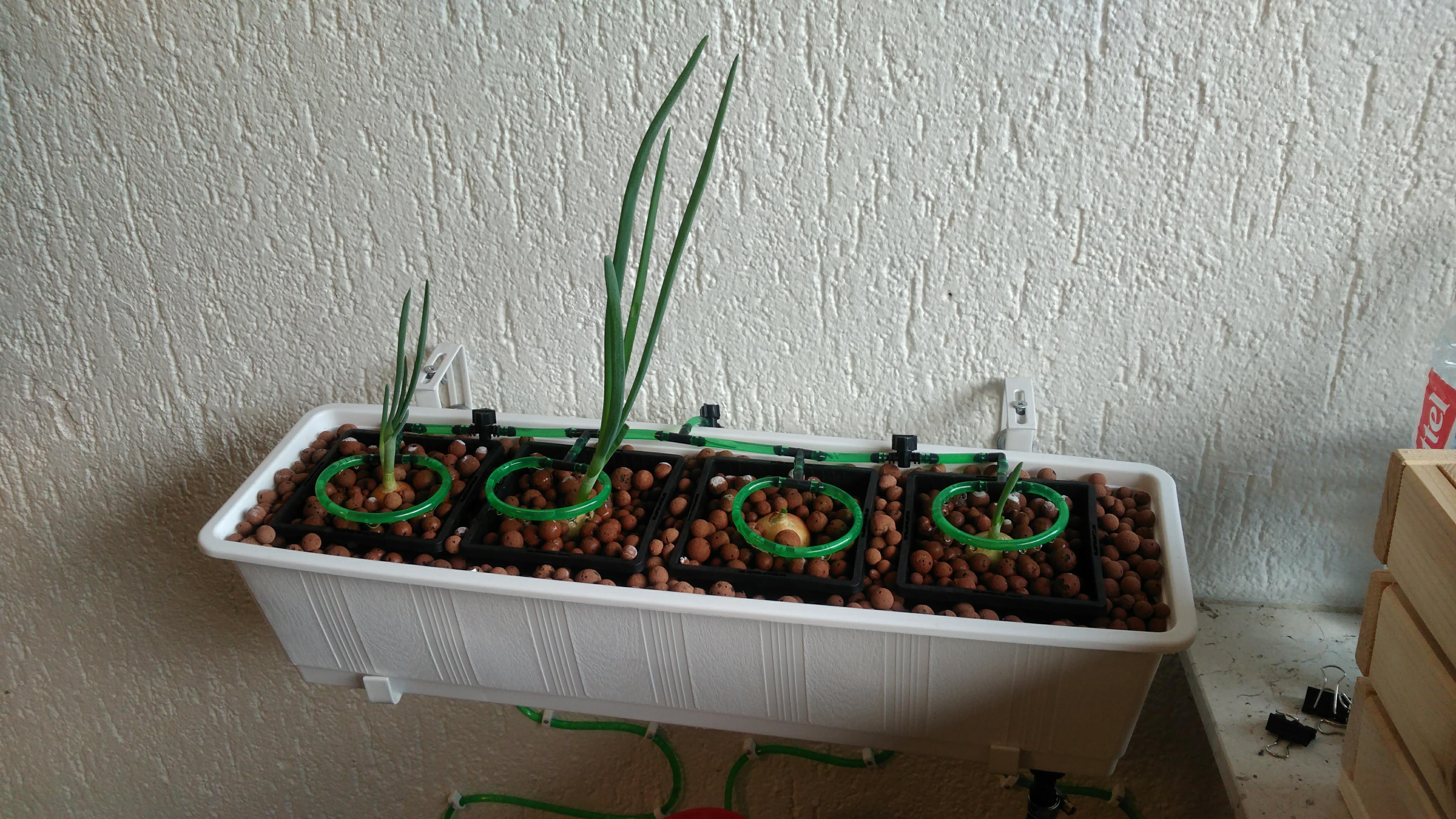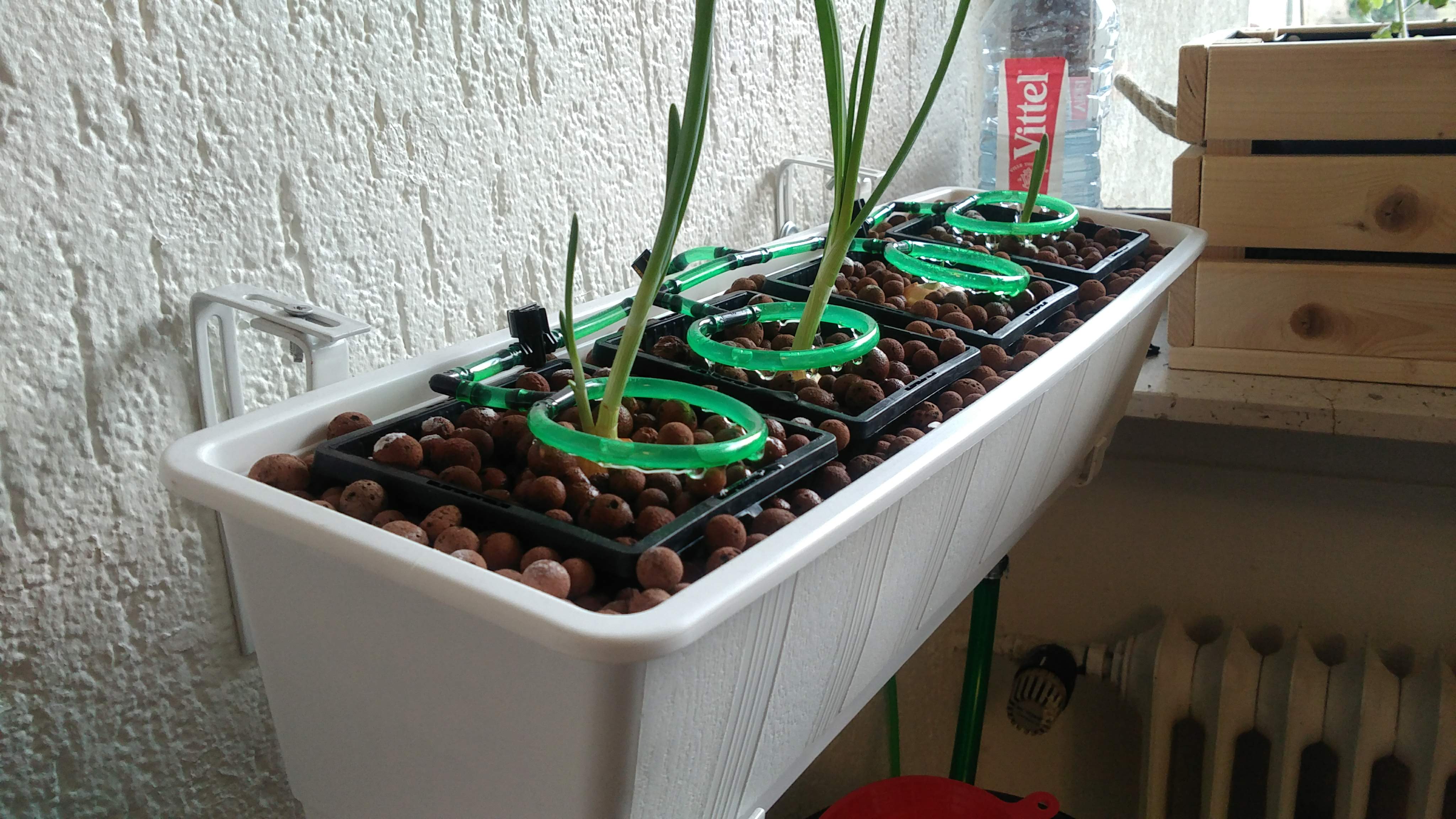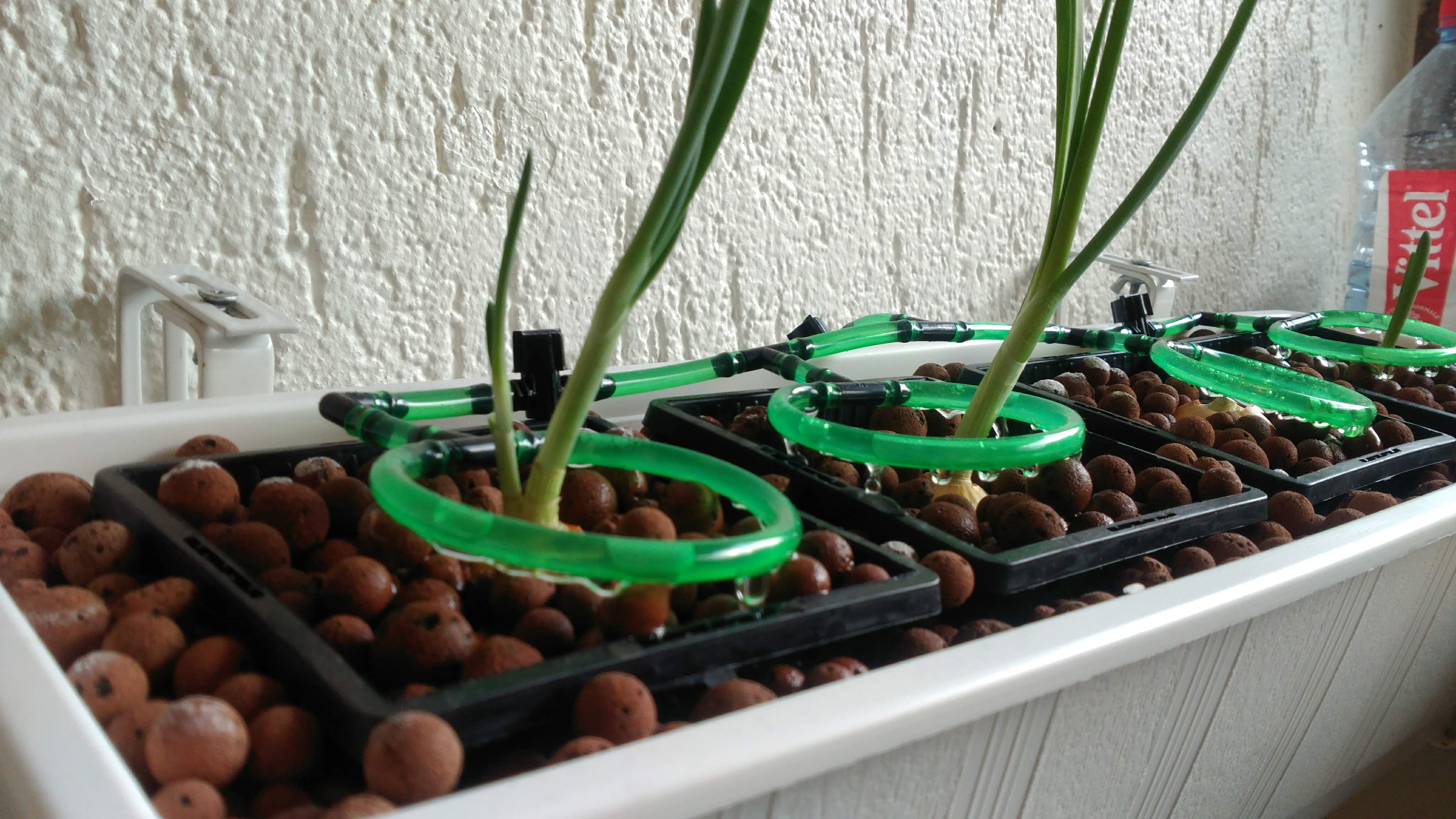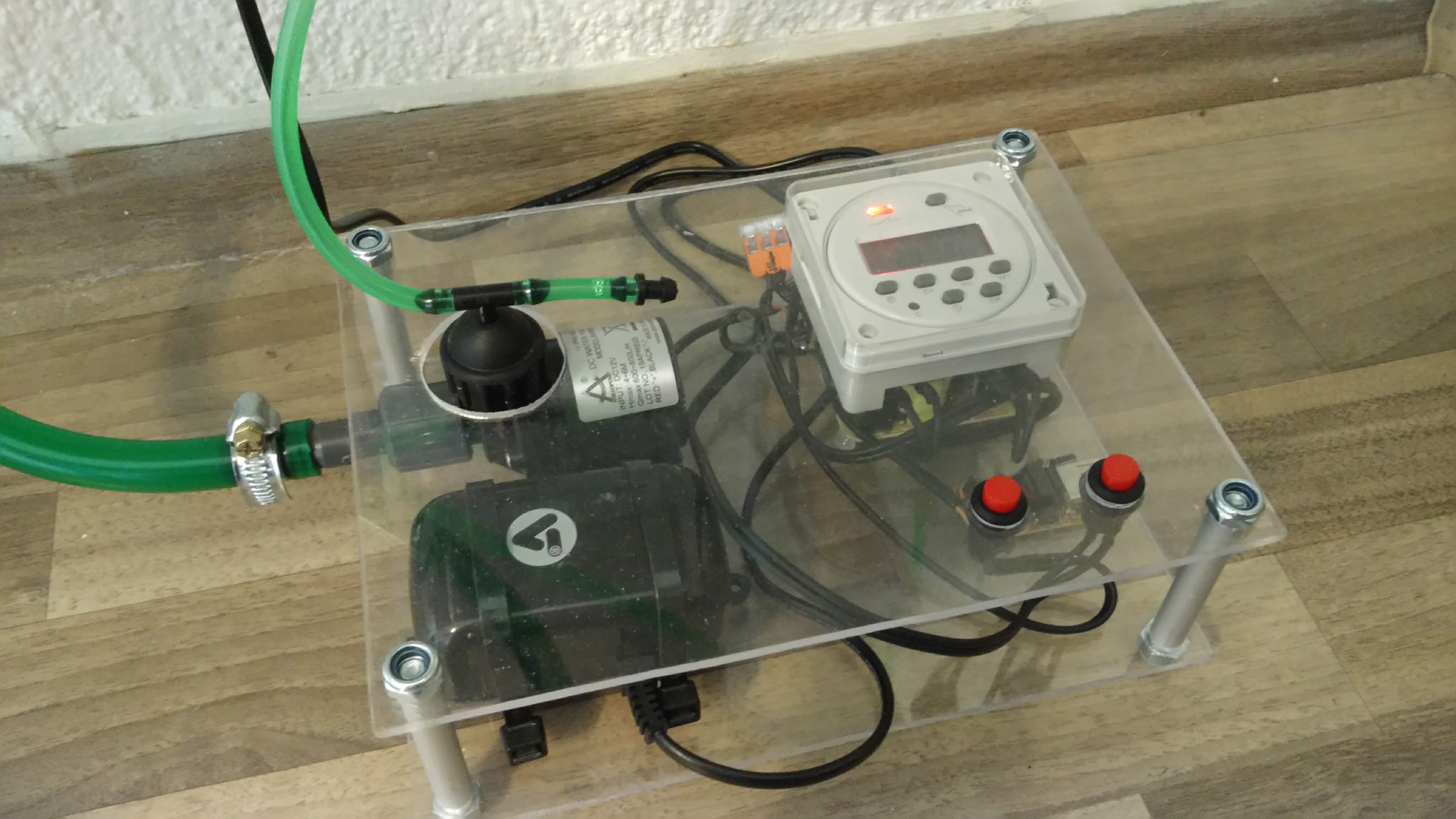Small hydroponic system at home
Increasing living space unavoidably results in filling up the new available space. In the end of last year I moved to a bigger apartment. Since I still have the same furniture, the unused space and volume keep bothering me. In the winter I built a shelving and now I store some useful stuff on it. In spring I got an idea to make a small garden at home. On weekend I built several wooden boxes, and put cherry tomatoes, onions and dill into it. But then I thought it’s not enough. I bought a couple of plastic containers and put more tomatoes. But I thought even that was not enough, and I got an idea to make a hydroponic system.
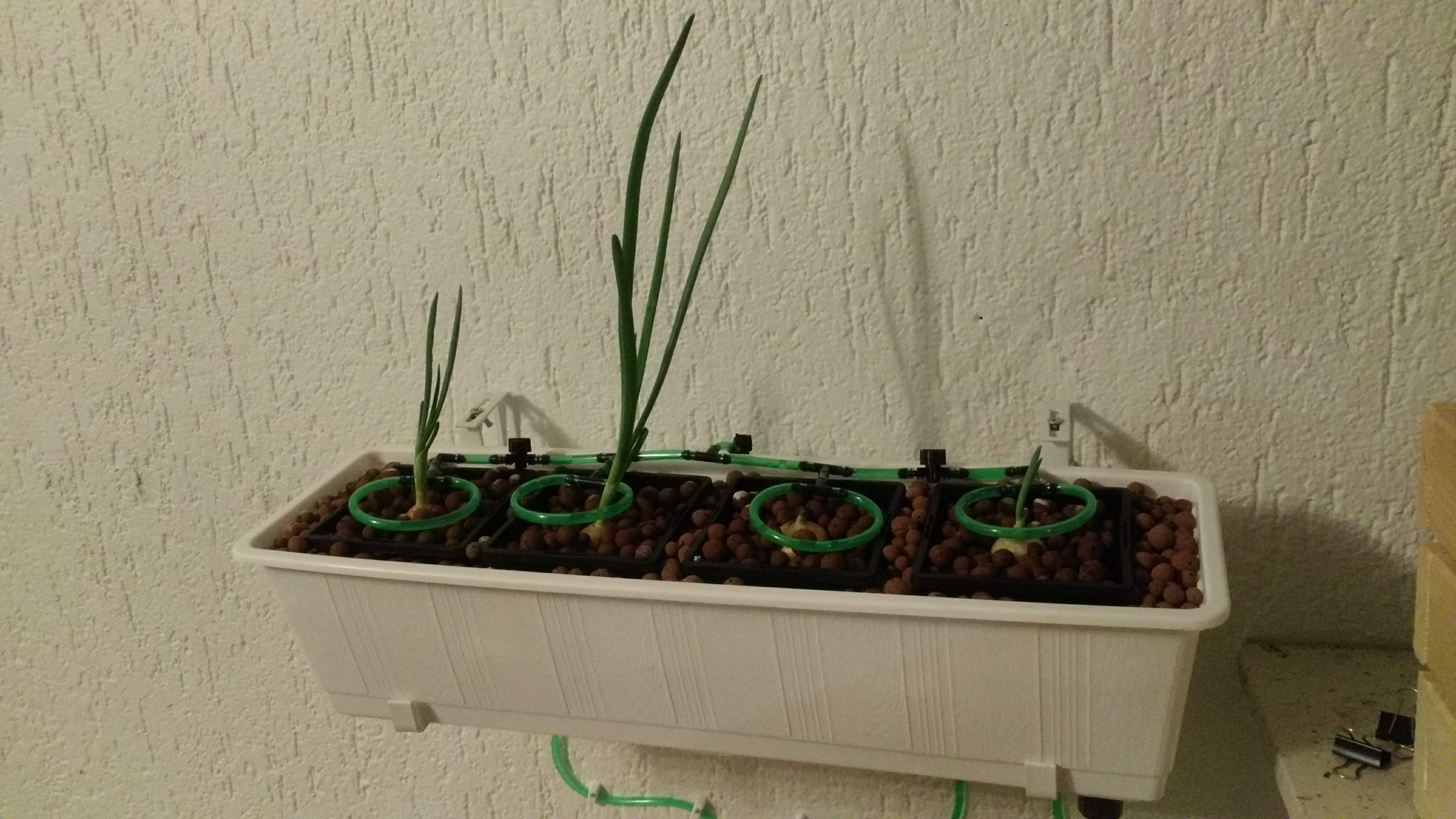
By the way, hydroponics is a technique of growing plants without soil by using mineral nutrient solutions in a water solvent. The roots are usually supported by a medium such as expanded clay or gravel.
I wanted the hydroponic system to be compact and modular, so that it would be possible to extend it if necessary. It would be also great if the system looked not too ugly.
There are quite a lot of designs of hydroponic systems. I decided to build a drip irrigation system. It contains of the following main components:
- containers for plants
- a tank with nutritious liquid
- a pump
- a timer relay
- various tubes for delivering the nutritious liquid to the plants
It works quite simply. The timer relay periodically turns the pump on which moves the nutritious liquid from the tank to the container with the plants. The container is connected with the tank by a tube, so that the liquid go back to the tank. That’s all.
I used a small 12V pump which was powered by a power supply for 2A max. I was too lazy to build my own timer relay with blackjack and hookers, so I just bought programmable one. It has 18 programs which looked to be enough. The container for plants was built from a simple box for flowers which people normally put on their balconies. In the container, I installed four pots for plants. The pots had a lot of little holes. Later I realized that it doesn’t really need pots, and I could have just fill up the container with medium. Finally, I installed a tube to connect the container with the tank. The tube is connected to the bottom of the container, so that the liquid can entirely go back to the tank. I used flexible tubes because it’s easier to work with them. The tubes were connected with each other by fittings of required shape, and I also installed several valves to be able to turn off delivering the liquid to particular pots.
I suddenly got a problems with a tanks for the liquid. There were a few requirements for the tank. First, the tank has to be dark, so that it doesn’t let the light in. Otherwise, some germs can start growing in the liquid which is not good. Second, I had to make a hole in the bottom of the tank to connect it with the pump. To be able to do that, the tank had to have a wide top, so that I could access the bottom. It turned out that it’s quite hard to find such a tanks which meet those two requirements. I visited all stores in the neighborhood and didn’t find anything. I gave up and just used an old bucket which unfortunately doesn’t look too great.
To make it look nicer, I put the pump, timer relay and power supply to a simple enclosure which I made from acrylic sheets. The face panel has the timer relay and a couple of switches. I have heard that the nutritious liquid has to have enough oxygen. Otherwise, plants may feel bad. So, I also installed an air pump to put more oxygen to the liquid. But it turned out that the air pump is not really required because the liquid normally has enough oxygen in a drip irrigation system.
There is one important thing. The liquid has to be delivered to the pump, so that it can then move it forward. I simply put the tank a bit higher than the pump, so that the liquid could naturally flow to the pump. Similarly, the container with plants has to be higher than the tank, so that the liquid could naturally flow to the tank.
For testing purposes, I put onions to the hydroponics, and I just used water instead of real nutritious liquid. Hopefully onions can grow just in water for some time. The system seems to work so far, and the onions slowly grow. If everything keeps working fine, I’m planning to extend the system with a couple of more containers, fill it out with a real nutritious liquid, and try to grow more interesting plants. Unfortunately Germany (where I currently live) doesn’t allow me to grow the most interesting plants like sunny California did several years ago. Meanwhile everything is ready. Let’s just wait.
